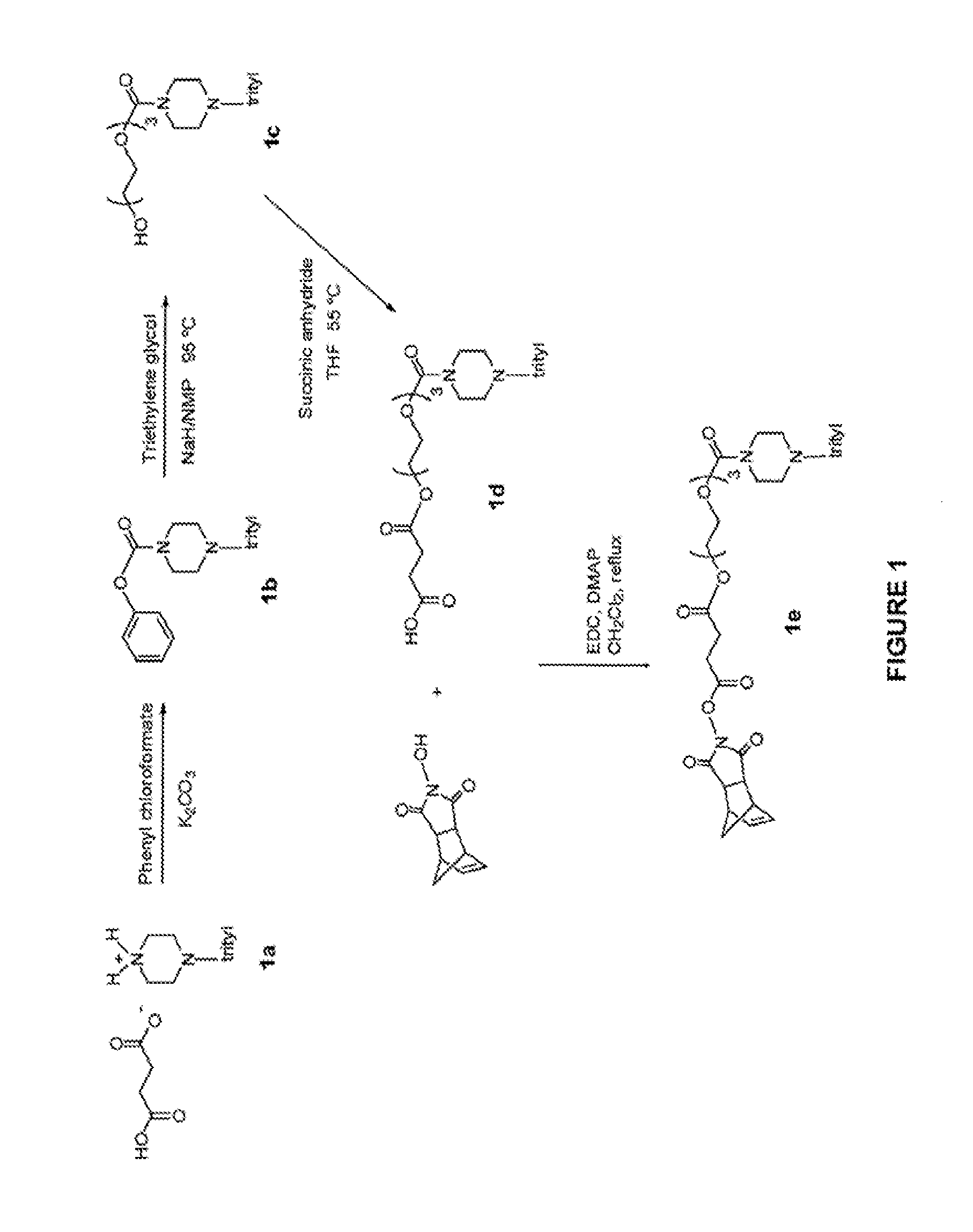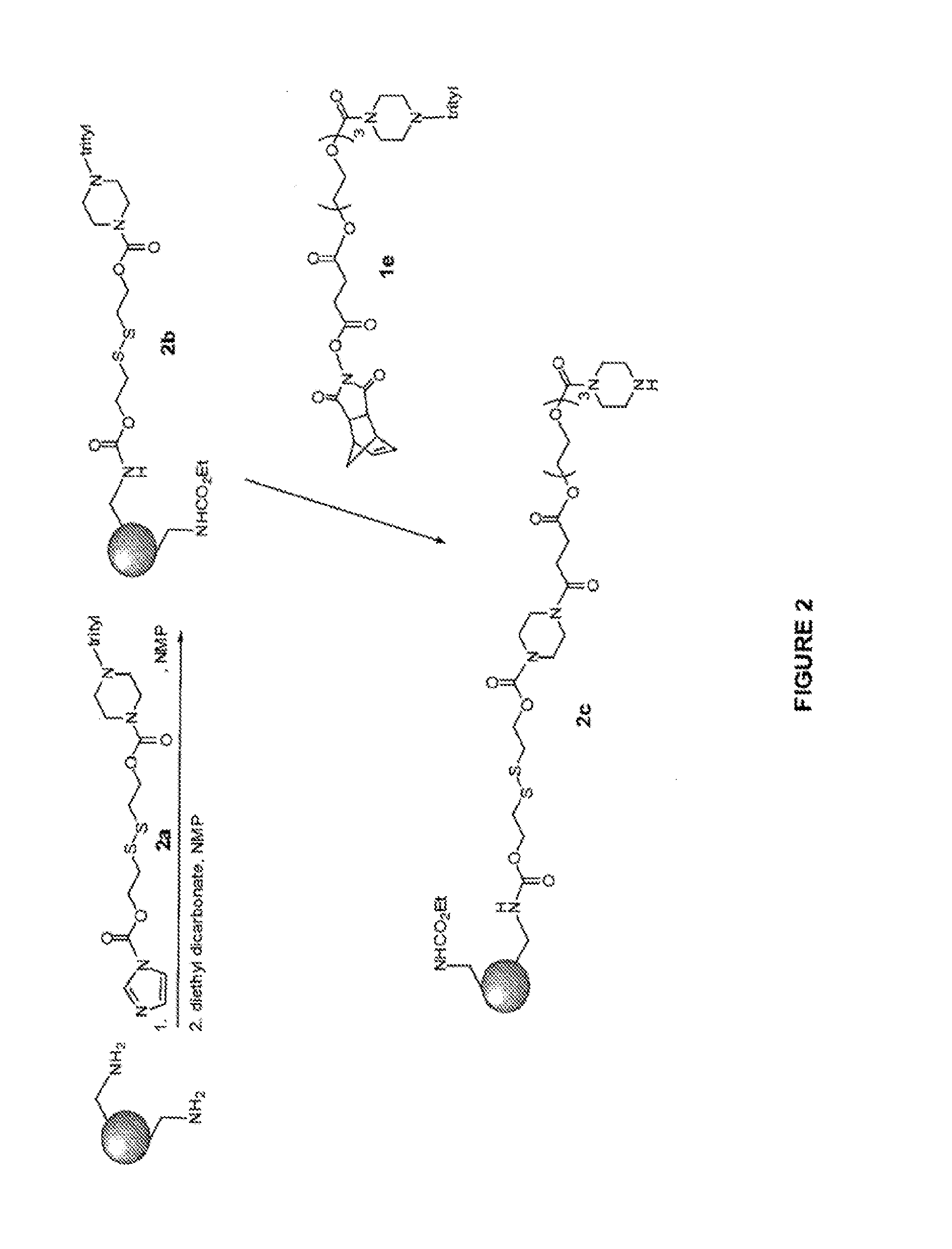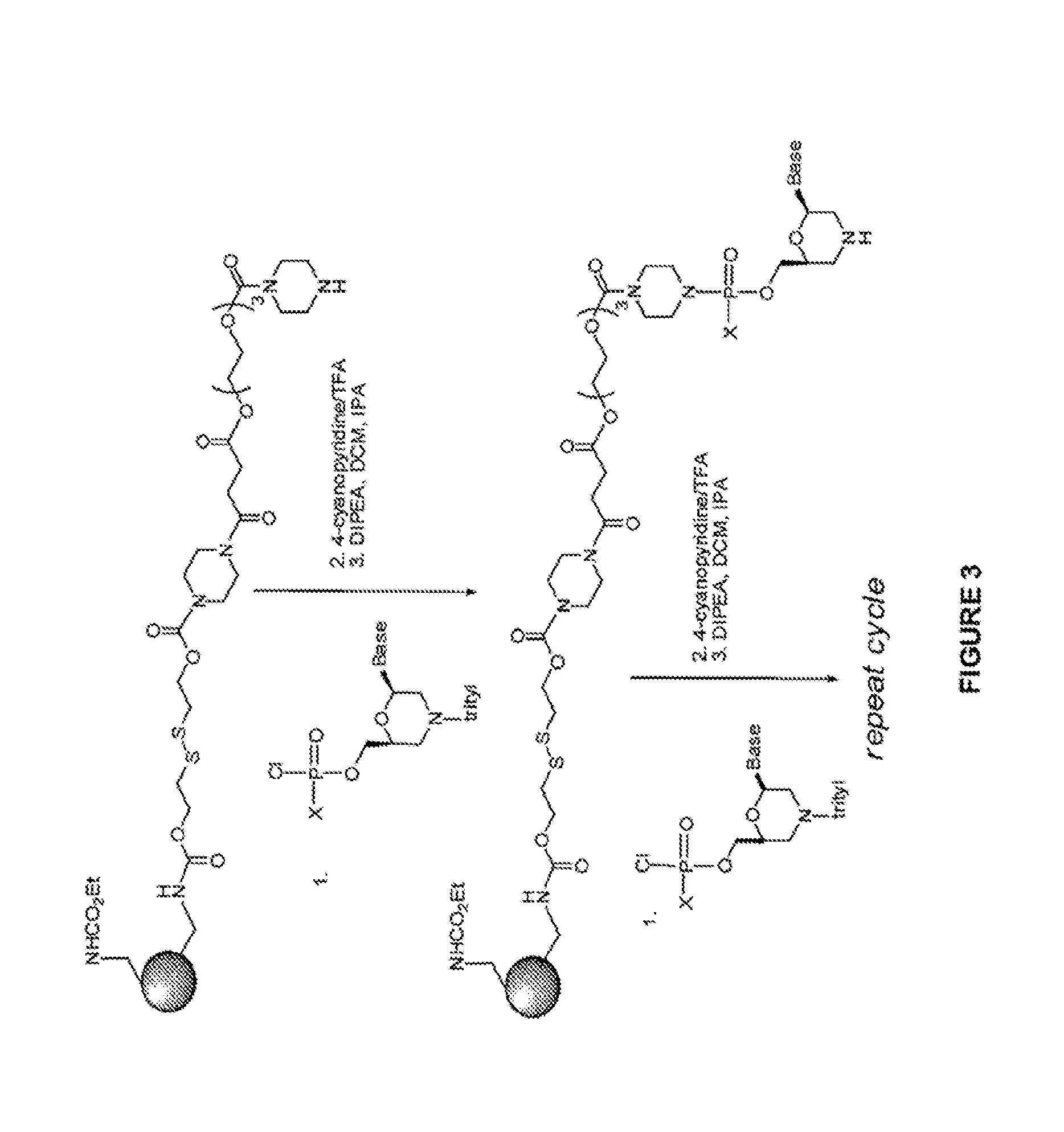Oligonucleotides for treating expanded repeat diseases
a technology of expanded repeats and oligonucleotides, applied in the field of antisense compounds, can solve the problems of affecting and affecting the cellular replication of the body, so as to reduce the expression of mrna
- Summary
- Abstract
- Description
- Claims
- Application Information
AI Technical Summary
Benefits of technology
Problems solved by technology
Method used
Image
Examples
example 1
((2S,6R)-6-(5-methyl-2,4-dioxo-3,4-dihydropyrimidin-1(2H)-yl)-4-tritylmorpholin-2-yl)methyl phosphorodichloridate
[0253]
[0254]To a cooled (ice / water bath) DCM solution (20 mL) of phosphorus oxychloride (2.12 mL, 22.7 mmol) was added dropwise 2,6-lutidine (4.82 mL, 41.4 mmol) then a DCM solution (20 mL) Mo(Tr)T (2) (10.0 g, 20.7 mmol) was added dropwise over 15 min (int. temp. 0-10° C.) then bath was removed a stirring continued at ambient temperature for 20 min. The reaction was washed with citric acid solution (40 mL×3, 10% w / v aq), dried (MgSO4), filtered and concentrated to a white foam (9.79 g) then used directly for the following procedure.
example 2
(6-(5-methyl-2,4-dioxo-3,4-dihydropyrimidin-1(2H)-yl)-4-tritylmorpholin-2-yl)methyl (4-(dimethylamino)piperidin-1-yl)phosphonochloridate
[0255]
[0256]To a cooled (ice / water bath) DCM solution (5 mL) of the dichlorophosphate from example 1 (5.00 g, 5.00 mmol) was added a DCM solution (5 mL) of the piperidine (0.61 g, 4.76 mmol) dropwise then the bath was removed and stirring continued at ambient temperature for 30 min. The reaction was loaded directly onto column. Chromatography [SiO2 column (40 g), DCM / EtOH eluant (gradient 1:0 to 1:1)] to afford the title compound (2.5 g) as a white foam. ESI / MS calcd. for 1-(4-nitrophenyl)piperazine derivative C46H55N8O7P 862.4, found m / z=863.6 (M+1).
example 3
1-(1-(chloro((6-(5-methyl-2,4-dioxo-3,4-dihydropyrimidin-1(2H)-yl)-4-tritylmorpholin-2-yl)methoxy)phosphoryl)piperidin-4-yl)-1-methylpyrrolidin-1-ium chloride
[0257]
[0258]The title compound was synthesized in a manner analogous to that described in Example 2 to afford the title compound (0.6 g) as a white solid. ESI / MS calcd. for 1-(4-nitrophenyl)piperazine derivative C49H60N8O7P 903.4, found m / z=903.7 (M+).
PUM
| Property | Measurement | Unit |
|---|---|---|
| Tm | aaaaa | aaaaa |
| Tm | aaaaa | aaaaa |
| Tm | aaaaa | aaaaa |
Abstract
Description
Claims
Application Information
 Login to View More
Login to View More - R&D
- Intellectual Property
- Life Sciences
- Materials
- Tech Scout
- Unparalleled Data Quality
- Higher Quality Content
- 60% Fewer Hallucinations
Browse by: Latest US Patents, China's latest patents, Technical Efficacy Thesaurus, Application Domain, Technology Topic, Popular Technical Reports.
© 2025 PatSnap. All rights reserved.Legal|Privacy policy|Modern Slavery Act Transparency Statement|Sitemap|About US| Contact US: help@patsnap.com



